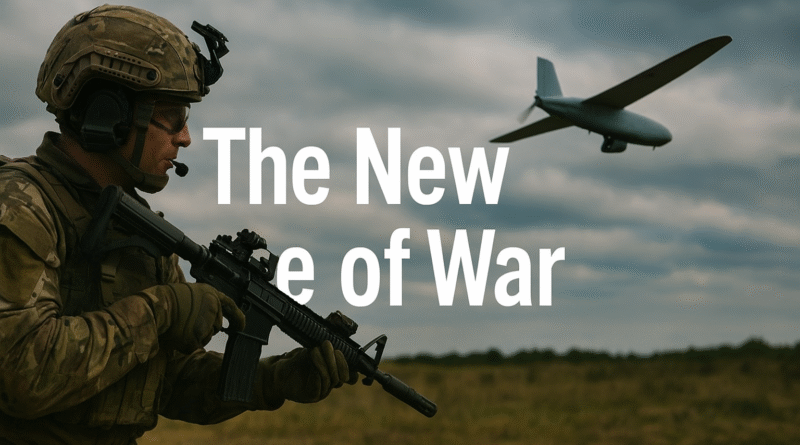The Future of War in an AI Driven World
The world has witnessed numerous conflicts and wars over the last century, and the very concept of warfare has continuously evolved as human societies developed more complex social and technological structures. However, the most significant shift in the past decade has been the widespread use of drones and AI-driven weapons systems across modern battlefields. A notable example emerged during the Second Nagorno-Karabakh War, when Azerbaijani forces successfully employed drone technology against Armenian units, ultimately restoring the country’s territorial integrity. Similar patterns have since appeared in other conflicts, where high-tech systems have intensified fighting and reshaped the nature of military operations. War is changing faster than ever before. From autonomous drones to AI-driven targeting systems, the tools of conflict are evolving in ways that challenge long-established military doctrines. This transformation isn’t simply about having better weapons, but it’s also about a shift in global power, strategy, and the very meaning of security.
Today, states are confronted with a new landscape where speed, data, and technological adaptation can matter more than traditional military strength. This raises urgent questions for policymakers: Are we prepared for the next generation of conflict? And who will lead in this rapidly shifting arena?
For most of history, military power depended on manpower, economic capacity, and industrial output. But the rise of digital technologies has ushered in what many describe as algorithmic warfare, a domain in which machines process information far faster than humans. Modern systems can fuse battlefield data, detect threats, and recommend responses in milliseconds. States that master these systems gain a decisive advantage. Those that fail risk strategic vulnerability, even if they possess traditional military strength.
Drones once served as surveillance tools; today they are precision strike platforms, loitering munitions, and battlefield scouts. Conflicts in Ukraine, Gaza, and the South Caucasus have shown how cheap drones can neutralize expensive assets, disrupt logistics, and alter the tempo of war.
This trend points to a future where autonomy reduces reaction time, making real-time decision-making essential, human–machine teaming becomes central to operational effectiveness, and ethical dilemmas intensify, especially regarding target identification and civilian risk.
The challenge for governments is balancing innovation with restraint. The states that strike this balance will shape the norms of future warfare.
Major powers, especially the United States and China, are racing to integrate AI into their militaries. This competition extends beyond weapon systems. It encompasses access to rare minerals, semiconductor leadership, data infrastructure, computing power and dual-use technologies.
The geopolitical consequences are profound. Military AI competition risks miscalculation, while dependencies in global tech supply chains can shift alliances or create new vulnerabilities. Mid-sized powers face a dilemma of pursuing independent technological capability, or aligning with one of the technological blocs. One of the most important features of this technological shift is accessibility. Advanced warfare is no longer exclusive to great powers. Low-cost drones, open-source algorithms, and commercial satellite imagery give small states, even non-state actors, capabilities that were once unimaginable.
This democratization of military technology means that small states can punch above their weight; their defense becomes more distributed and decentralized; and hybrid warfare becomes easier to conduct and harder to detect. The future battlefield is not only physical; it is digital, cognitive, and informational.
Governments around the world are struggling to keep up with the speed of technological innovation. Procurement systems are slow, legal frameworks outdated, and military cultures resistant to change.
The question is not simply whether states possess advanced weapons. The question is whether they can adapt institutionally, strategically, and ethically. Failure to do so may mean falling behind in a world where technological power increasingly shapes political power.
We are at a historic turning point. The tools of war are evolving faster than the doctrines that govern them. Nations must rethink deterrence, alliances, and strategy in a world where AI, autonomy, and digital systems redefine the balance of power. Those who understand these transformations and act accordingly will lead in the new age of global competition. Those who do not will find themselves vulnerable in ways they have not yet imagined.
